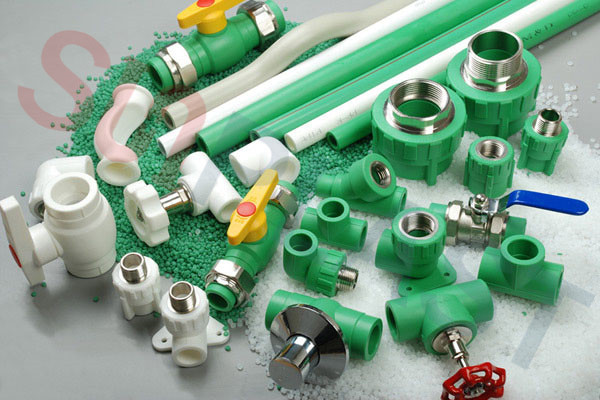
- English
- Español
- Português
- русский
- Français
- 日本語
- Deutsch
- tiếng Việt
- Italiano
- Nederlands
- ภาษาไทย
- Polski
- 한국어
- Svenska
- magyar
- Malay
- বাংলা ভাষার
- Dansk
- Suomi
- हिन्दी
- Pilipino
- Türkçe
- Gaeilge
- العربية
- Indonesia
- Norsk
- تمل
- český
- ελληνικά
- український
- Javanese
- فارسی
- தமிழ்
- తెలుగు
- नेपाली
- Burmese
- български
- ລາວ
- Latine
- Қазақша
- Euskal
- Azərbaycan
- Slovenský jazyk
- Македонски
- Lietuvos
- Eesti Keel
- Română
- Slovenski
- मराठी
- Srpski језик
What are the several pressures related to PPR water pipes?
2024-11-04
Pressure is an essential parameter of the PPR pipe system, but pressure often has many names. If you don't know enough and the concept is not clear, you will often confuse them and can't understand them well.

1. The pressure names often mentioned in the PPR pipe system are nominal pressure, working pressure, and design pressure.
Nominal pressure is the PN pressure, which is usually marked on the pipe. The nominal pressure is a nominal pressure artificially stipulated for the convenience of design, manufacturing and use. The nominal pressure of the water pipe is conditional. For example, PN20 means that the water pipe can withstand a working pressure of 20 bar (20 bar = 2 Mpa) when it runs at a water temperature of 20 ℃ for 50 years. If the water temperature is between 25 ℃ and 45 ℃, the working pressure should be reduced according to different temperature drop coefficients.
Many people think that this 2 Mpa is the maximum pressure that the water pipe can withstand, which is wrong. This requires explaining the difference between working pressure and design pressure.
Working pressure refers to the maximum pressure specified according to the highest working temperature of each level of the pipeline transport medium for the safe operation of the pipeline system within a certain period of time. It is usually expressed as Pt. PPR water pipes can generally operate for 50 years if they operate safely under working pressure.
The design pressure refers to the maximum instantaneous pressure exerted on the inner wall of the water supply pipeline system. Generally, the sum of the working pressure and the residual water hammer pressure is used.
2. What is the maximum instantaneous pressure that the inner wall of the water pipe can withstand related to?
The most important influencing factor is the wall thickness of the water pipe. The thicker the wall thickness of the water pipe, the greater the maximum instantaneous pressure it can withstand.
Secondly, the mechanical properties of the raw materials themselves are also one of the influencing factors. Even if they are the same PPR raw materials, there are still differences in the products produced by different manufacturers, and there are also differences in mechanical properties. This difference will eventually affect the ultimate pressure resistance of PPR water pipes.
In addition, the production process of water pipes also affects the pressure bearing capacity of water pipes to a certain extent. If there is uneven mixing in production, the water pipe will have shortcomings in mechanical properties.
3. Secondly, it is the concept of the pressure level of the pipeline system. Our pipeline system is usually divided into the following four levels, namely low pressure, medium pressure, high pressure, and ultra-high pressure.
Low-pressure pipeline: nominal pressure does not exceed 2.5MPa
Medium-pressure pipeline: nominal pressure 4-6.4MPa
High-pressure pipeline: nominal pressure 10-100MPa
Ultra-high-pressure pipeline: nominal pressure exceeds 100MPa
From the perspective of this pressure level division, water pipelines generally belong to low-pressure pipeline systems, so the general nominal pressure will not exceed 2.5MPa.
4. Commonly used pressure (accurately, pressure) units are bar, MPa, and kgf/cm2. Bar is a unit commonly used in the engineering field, the international unit of MPa, and kilogram force is a unit often used in China to express pressure. The conversion relationship between them is:
1 bar = 0.1 Mpa = 1.01971621 kgf/cm2




